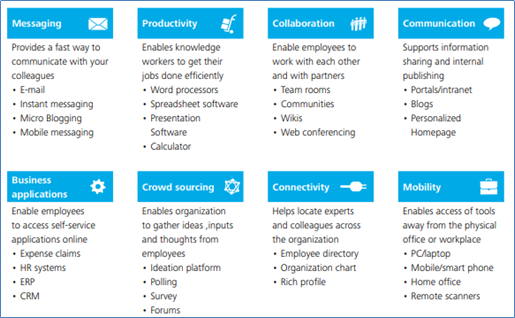Introduction
It has been almost 18 months since work has changed the way we used to know it. Meetings accompanied by sounds from the kitchen, surprise appearances of family members in video calls, the workplace has indeed changed. Remote work has become the new normal, and organizations hitherto hesitant to this work model are now embracing and adapting to this change.
As Rajiv Sodhi, Chief Operating Officer, Microsoft India, puts it, “we are no longer bound to traditional notions of space and time when it comes to how, when, and where we work.”
Sitting on their couch at home with a mug of coffee and a laptop has been a visual of an ideal mode of work or even a dream for many. This utopia has turned into reality in the last year and a half.
In some cases, employees have realized that remote work productivity has almost been the same as at the office or even more. They have taken a liking to the conveniences which were only enjoyed during vacations thus far. The work trend index survey by Microsoft provides workplace insights on remote work preferences. Nearly three-fourths (74%) of employees say they want more flexible remote work options
Evolving employee preferences, attrition, and Capex benefits for employers lead to a remote work model, being the future. Studies indicate the following key reasons for the acceleration of the remote working trend.
- Employees defining their working schedule
- Ability to work from anywhere
- Avoidance of long commute to the office
- Better time management for personal life
- Satisfying
Below are the findings from the “State of Remote work 2021” on the top reasons for employees’ inclination to remote work:

The role of tech tools for remote work:
Many tech tools and solutions have been leveraged on a large scale to enable and sustain remote working and redress remote work challenges. Most organizations have been focusing primarily on collaboration tools to let employees connect, Communicate, and Collaborate.
Armed with the right tools, a workforce can be more engaged and productive, there is scope for greater innovation, enhanced collaboration and communication, and, as a result, larger business growth. According to a Deloitte research article, a well-curated tool-stack has also been shown to increase knowledge sharing across teams, enable talent attraction, increase employee productivity, and increase employee satisfaction by 20%. In most companies, the tool stack is split into the following categories:
- Communication by company intranet, customized and personalized homepages, Email, video conferencing, instant messaging, etc.
- Collaboration through web conferencing, team rooms, whiteboards, brainstorming, communities.
- Productivity tools for project management, presentations
- Core business tools such as ERPs, HRMS, CRMs, accounting tools
- Workforce-Sentiment Feedback loops through tools for polls, surveys, forums, etc.
- Connectivity web comprised of organizational charts, employee directory
- Hybrid workplace tools and home office hardware
More sophisticated and nuanced use of these tools and their digital exhaust can provide valuable data and insights to maximize workforce potential in a hybrid workplace. We are already seeing companies leverage insights from workplace analytics to build organizational culture, promote employee well-being, and equip their leaders with data to form effective productivity strategies.

These are guidelines only, and every organization will have its own remote work tool kit specific to its needs. Organizations must have a holistic view of the tools, processes, and systems to ensure business goals are continuously met during such times of revolution in the workplace.
During the last year, organizations realized the need to measure employee productivity, engagement, and well-being objectively. While productivity and engagement are critical for driving business results, it is also essential to ensure employee wellbeing. We are already witnessing massive levels of attrition in the industry.
To this end, tools like Hatica were leveraged to provide insights from work analytics to help engineering leaders manage their distributed workforce. Actionable workplace insights from Hatica helps foster effort alignment, accelerate delivery, and drive team engagement. An engaged and happy employee is critical to the success of any business. Such tools integrate with existing enterprise apps and provide intuitive insights for performing contextual analysis and decision making.
Tech Toolkit
Here is the list of top tech tools, categorized based on their purpose, that many organizations adopted for remote working in 2021.
- Project management and Collaboration: Slack, Asana, ProofHub, Trello, GanttPRO, Hiver
- Meeting Schedulers: Doodle, Calendly, 10to8, HubSpot Meetings
- Meetings and collaboration: Zoom, MS Teams, GoToMeeting, Google Meet, Cisco WebEx
- Cloud storage, Document sharing: Google Drive, Dropbox, Skitch by Evernote, Alfresco
- Remote work productivity: Todoist, Slack, Blink
Apart from these tools, organizations also utilized various tools to measure employee performance like Oracle performance management, Kissflow HR, Inspire, and tools like HiveDesk, TimeDoctor to gather metrics for remote work efficiency.
Another area of growing importance has been the measurement of employee productivity and engagement. Many work analytics tools like Hatica and Lattice help with workforce analytics, employee engagement measurement, and alignment to organization goals. These tools have robust reporting capabilities that make the job of managers and leaders easy.
They also offer an easy-to-read dashboard to track employee engagement, helping business leaders with data for arriving at crucial decisions.
The Future
As we gradually grapple our way out of the pandemic, it must be acknowledged that the future of the workplace has changed forever. While there are benefits to employees and organizations from remote work, organizations also have critical concerns.
Apart from enabling employees with a digital workplace toolkit, organizations must evolve a strategy to address governance, risk, and statutory compliance needs. While creating a workplace for the future, organizations must design it to promote a hybrid workplace guard railed by robust governance models to foster employee collaboration and productivity while mitigating risks and ensuring compliance. See pip format to understand how to work on the performance improvement plan template and its accurate usage of it.
As tools for the digital workplace grow increasingly sophisticated, enterprises will turn to the data generated from the tools for analytics on their digital workplace and operational visibility into their people and their processes.
A successful digital workplace will be an integral part of an organization’s culture so that the people, the processes, and the technology can become more than just the sum of the parts.
Organizations looking to succeed in the future need to adopt a custom, agile approach to devise, implement and revise models for the workplace.
Conclusion
As we step forward to a new normal, there’s no doubt that businesses need to be highly dynamic and watchful to keep pace with the changes.
But this is also an opportunity for business leaders to retain and attract the best of talents from across the globe by offering a flexible workplace and ensuring employee wellbeing – furthering better business outcomes. A flexible, hybrid workplace augmented with adequate tools offering hybrid workplace analytics and insights and an ear to employee needs would help build an ideal workplace for the future.




![Merchant Navy Recruitment 2024: [4000+ Posts]: How To Apply Online? Merchant Navy Recruitment 2024: [4000+ Posts]: How To Apply Online?](https://futurewithtech.com/wp-content/uploads/2024/05/Indian-Merchant-Navy-Recruitment-2024-218x150.jpg)
